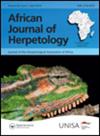从南非以自然为基础的文化实践的视角看青蛙和爬行动物的保护
IF 0.9
4区 生物学
Q2 Agricultural and Biological Sciences
引用次数: 0
摘要
本文章由计算机程序翻译,如有差异,请以英文原文为准。
Frog and reptile conservation through the lens of South Africa’s nature-based cultural practices
ABSTRACT Ethnoherpetology improves our understanding of the conservation implications of nature-based cultural practices through investigations of the influence of traditional culture on frog and reptile species (herptiles). Improved understanding of the implications of human activities on these taxa is especially important as herptiles are experiencing global population declines. Furthermore, improved understanding of nature-based cultural practices can better inform conservation planning that includes cultural practices as defined by South African legislation. The herptile-based cultural practices recorded from a sample of 275 online questionnaire respondents and 68 publications show some cultural practices to compel or inspire protection of herptiles. Conversely, other practices were found to pose a conservation risk as they either involve killing herptile species or they perpetuate negative perceptions towards them. Leveraging protective cultural practices as a conservation tool and mitigating culture-motivated threats requires integrating cultural aspects into modern law. Such an integrative approach is possible under South African legislation’s provisions for socially inclusive conservation planning and recognition of customary law. Integrative conservation approaches are also in line with international policy such as the Kunming-Montreal global biodiversity framework. In addition to an inventory of herptile-based cultural practices, the study also assesses their feasibility as conservation tools. Furthermore, this study highlights a need for quantification of their conservation implications (both positive and negative) and aligning protective traditional cultural practices with modern means of law enforcement.
求助全文
通过发布文献求助,成功后即可免费获取论文全文。
去求助
来源期刊
CiteScore
2.60
自引率
6.70%
发文量
0
审稿时长
>12 weeks
期刊介绍:
African Journal of Herpetology (AJH) serves as an outlet for original research on the biology of African amphibians and reptiles. AJH is an interdisciplinary journal that publishes original articles and reviews from diverse fields and disciplines, such as conservation, phylogenetics, evolution, systematics, performance, physiology, ecology, behavioural ecology, ethology, and morphology.
The Journal publishes two issues a year. There are no page charges .

 求助内容:
求助内容: 应助结果提醒方式:
应助结果提醒方式:


